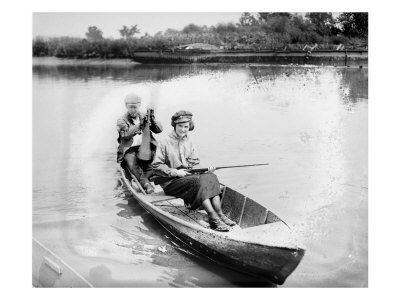I've been working my slowly through one of my Christmas presents: "Firearms of the Fur Trade," the first volume in the Museum of the Fur Trade's Encyclopedia of Trade Goods, by Dr. James Hanson. At nearly 600 pages and packed with illustrations, this book is a must-have if you are serious about the subject.
Anyway, I just wanted to note that I have so far seen at least three photos of Northwest trade guns modified to "canoe gun" dimensions in the book so far. We'll never know if the guns were cut down as a result of burst barrels, or because the owners found the resulting firearm incredibly handy. But they were there back in the day.
:grin:
Anyway, I just wanted to note that I have so far seen at least three photos of Northwest trade guns modified to "canoe gun" dimensions in the book so far. We'll never know if the guns were cut down as a result of burst barrels, or because the owners found the resulting firearm incredibly handy. But they were there back in the day.
:grin:







